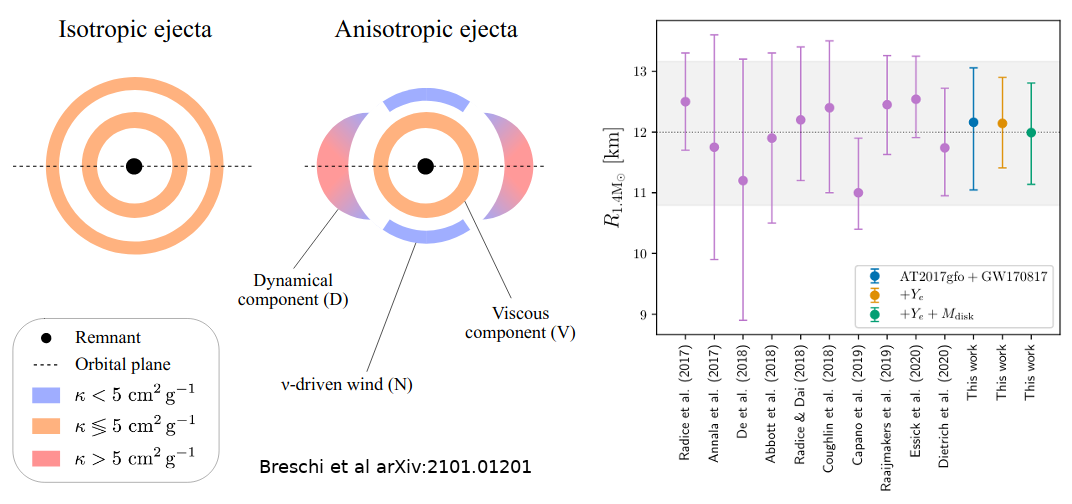AT2017gfo: Bayesian inference and model selection of multi-component kilonovae and constraints on the neutron star equation of state
In 2101.01201 we perform Bayesian inference and model selection on AT2017gfo using semi-analytical, multi-components models that also account for non-spherical ejecta. We find that observational data favor anisotropic geometries to spherically symmetric profiles, with a log-Bayes’ factor of ∼10,000, and favor multi-component models against single-component ones. Among the explored models, the best fitting model is an anisotropic three-component model composed of dynamical ejecta plus neutrino and viscous winds. Using the dynamical ejecta parameters inferred from the best-fitting model and numerical-relativity relations connecting the ejecta properties to the binary properties, we constrain the binary mass ratio of the source to q<1.54 and the reduced tidal parameter to 120<Λ<1110. Finally, we combine the predictions from AT2017gfo with those from GW170817, constraining the radius of a neutron star of 1.4 M⊙ to 12.2±0.5 km (1σ level). This prediction could be further strengthened by improving kilonova models with numerical-relativity information.
Read more
